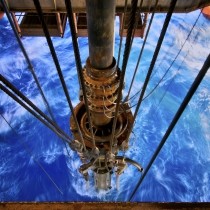
Advisor Blog | Sep 2025
STI Plan Communication: Insights from the 2025 Pearl Meyer Survey for Oil & Gas Companies
Pearl Meyer surveyed 16 oil and gas companies to highlight communication challenges and opportunities particularly relevant to the sector.
In June 2025, Pearl Meyer surveyed nearly 280 organizations to assess how companies communicate their short-term incentive (STI) plans. While the findings reflect broad market practices, a closer look at the responses from 16 oil and gas–related (O&G) companies—including exploration and production (E&P), midstream, oilfield services, and drilling contractors—highlights communication challenges and opportunities that are particularly relevant in this sector.
In an industry defined by volatility, capital discipline, and an ever-evolving energy landscape, STI plans must do more than measure outcomes. They are a vehicle for reinforcing priorities, aligning the workforce, and sustaining performance focus in a dynamic environment. Yet the survey data show that many O&G companies have significant opportunity to sharpen how these plans are communicated.
What the O&G Data Revealed
The survey highlights several areas where communication practices could be stronger:
- Confidence is uneven. Only 20 percent of O&G respondents are very confident employees understand what drives STI payouts. The majority (73 percent) express they are only “somewhat confident.”
- Metrics are shared, but context is lacking. Almost half (47 percent) provide what the specific metrics and goals are but assume the rationale for choosing those metrics and goals is clear and do not provide explanations. Only 20 percent clearly explain the decisions behind why those metrics and goals are important to driving performance.
- Line of sight is weak. Just 7 percent clearly articulate how roles influence outcomes, while more than half (53 percent) rely on general messages about “contributing to success.”
- Updates are limited. Almost half (47 percent) of companies provide no in-year updates; only 27 percent communicate with all participants. When updates are given, they are almost always on a quarterly basis, with 50 percent timed with quarterly earnings results.
- Managers remain underutilized. Only a quarter (25 percent) rely on manager-led cascades or team briefings, despite frontline supervisors being the most credible messengers in operationally intensive environments.
- Few are evolving. More than three-quarters (80 percent) report no change to their communication approach in recent years, even as O&G companies shift performance priorities that annual incentives are meant to reinforce.
When communication is inconsistent or overly high-level, employees may understand what the metrics and goals are but not why they matter, or how their efforts contribute. In a sector where execution risk is high, that disconnect can reduce the motivational power of the plan.
Moving from Information to Alignment
The data also point out the practical steps O&G companies can take to close the communication gap and strengthen the impact of their incentive plans:
- Explain the rationale. Connect metrics like EBITDA, production efficiency, or emissions intensity reduction to the company’s broader strategy and market positioning.
- Strengthen line-of-sight. Provide role-specific examples of how field operations, engineering, or corporate functions influence outcomes.
- Be consistent. Establish quarterly updates that share meaningful insights about results to date. Timely feedback helps employees adjust their behaviors and remain engaged.
- Empower managers. Equip supervisors with simple tools and talking points to reinforce messages in day-to-day performance conversations.
- Evolve with strategy. As priorities shift—whether due to commodity cycles, investor expectations, or decarbonization goals—communication should evolve as well.
Closing the Gap
The Pearl Meyer survey underscores a simple but powerful point: strong STI plans require equally strong communication. In oil and gas, where external volatility can easily distract from internal focus, clarity and consistency are strategic advantages. By elevating communication from routine information-sharing to a thoughtful, role-relevant dialogue, O&G companies can ensure their incentive plans do more than pay out—they can drive alignment, focus, and performance.


